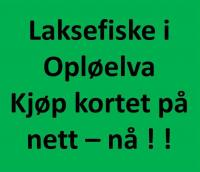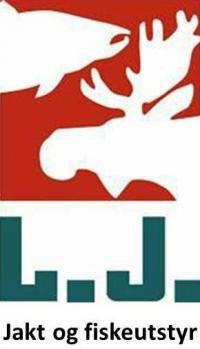Namsen
The Namsen is famous for its big salmon, with fish weighing more than 20 kg being caught on it every year. Fishing by boat – known as harling – is customary, and both the boats and fishing methods used are very traditional. The fisherman can have several rods out at the same time while his private oarsman takes the boat downstream,
steering from side to side of the river. The lower reaches of the river are relatively wide. Harling is most usual there, but many people also fish from the bank. The upper reaches are narrower and faster flowing. Fishing from the bank is customary here, and there is a growing trend towards fly fishing from the bank in the river system. In the case of harling it is customary to use wobblers, spoon baits and the odd fly, whereas flies, spoon baits
and worms are used for fishing from the bank. The river system is around 210 km long with a catchment area of around 6,300 km². The Namsen is Norway’s twelfth longest river, and the river system is Norway’s eighth largest in terms of catchment size. The average annual water flow at Bertnem in Overhalla is 240 m³/sec, while at the mouth of the Namsen it is around 290 m³/sec. The water flow and temperature are relatively stable, as the river system is controlled.
Sanddøla
The Sanddøla is ideal for fly fishing from the bank, but there is harling on its lowest reaches. Nerhøla in Tømmeråsfoss is the only zone where harling is done to any extent. The average size of salmon is between 4 and 6 kg, slightly above the average for the rest of the Namsen.
The Sanddøla is the largest tributary system flowing into the Namsen. Salmon ladders mean that salmon run all the way up to Bergfossen in Sanddøladalen (at the foot of Lifjellet), a stretch of about 40 km.
The river system is not controlled, so the water flow varies with rainfall. Large lakes in the upper reaches of the river system help to even out water levels.
Bjøra
The Bjøra is famous for having the largest salmon of all the rivers in the Namsen river system, with the average weight being between 5 and 6 kg. Fishing is done both by boat and from the bank, but fly fishing from the bank is the most usual type of angling. The Bjøra is also famous for its good sea trout fishing.
The Bjøra enters the Namsen just above the centre of Overhalla. It flows out of Lake Eidsvatnet, making the river itself a good 10 km long.
Høyland river system
The Høyland river system includes the Søråa, Eida, Nordåa, Flakkan and Flåttelva rivers. The first two are the most important fishing rivers. There are also three relatively large lakes in this river system: Eidsvatnet, Grongstadvatnet and Øyvatnet. The water flow varies with rainfall, but the lakes help to even out fluctuations.
Eida
The Eida is a very fast-flowing river of about 1 km in length that runs between Lake Eidsvatnet and Lake Grongstadvatnet. Most of the fishing is done from the bank with both spoon baits and flies.
Søråa
The Søråa, including the Nordelva, is about 15 km long and lies slightly further up the river system than the Eida. Fishing is mainly done from the bank. Both spoon baits and flies are used, but the Søråa is a very good fly river, and particularly fine for fishing with a one-handed fly rod perhaps.
The average size of salmon on the Søråa is between 4 and 5 kg. The speed of the water varies quite a bit.
Other rivers around Namdalen
Bogna
The Bogna has substantial stocks of small salmon with an average weight of around 1.5 kg. The river runs through a varied landscape, making it still in some sections and very fast flowing in others.
All fishing is done from the bank with a variety of tackle – flies, spoon baits or worms – depending on the conditions on the various parts of the river. The river system has a catchment area of around 463 km² with a theoretical average water flow at the mouth of about 19 m³/sec.
The upper reaches of the river system are controlled for power generation, so fishing has to be adapted to the water conditions. Water flow varies with rainfall and there is reduced flow on the lower reaches of the river.
Fishing licences are sold on several stretches of the river, including from Bangsund Trafikkstasjon, tlf: 47 7428 7444
Aursunda
The Aursunda has good stocks of small salmon with an average weight of around 1.5 kg. The river has both still and very fast-flowing stretches, making it ideal for rod fishing with spinner and fly.
The river system has a relatively stable water flow, so fishing is predictable during most of the salmon season. The river system has a catchment area of around 163 km² with an average water flow at the mouth of about 6 m³/sec.
Fishing licences are sold on several stretches of the river, including from Bangsund Trafikkstasjon, tlf: 47 7428 7444
Årgård River
The Årgård river system has copious stocks of small salmon with an average weight of around 1.5 kg. Parts of the salmon stretch are reserved for people who need organised fishing and these sections are sold together.
The river system has a catchment area of around 540 km² with an average water flow at the mouth of about 25 m³/sec. Fishing is dependent on good water levels, which once again vary with rainfall.
Fishing licences: Contact Fosslia Hytter og Laksefiske; Anne Britt and Arnstein Berg ( 47 7427 8309) or Willy Sverkmo ( 47 7427 8915)
Lauvsnes River
The Lauvsnes river system is controlled for power generation, so only the lowest reaches downstream of Lauvsnes Power Station have salmon. This is a stretch of approximately 70 metres in the tidal zone. The river is suitable for fishing from the bank with spoon baits, spinners and worms.
The Lauvsnes river system is in the Municipality of Flatanger and flows into the sea at Lauvsnes. It has a catchment area of 103 km² with an average water flow at the mouth of about 4 m³/sec.
The Oplø River
The Oplø river system is about 60 km north of the Namsen. The good flow of water in the river means that it attracts a lot of salmon, including large fish. Although the fishable stretch of the river is only about 150 metres in length, between 100 and 200 salmon are caught annually, with the largest weighing as much as 15 kg.
The entire fishable stretch is in the tidal zone, where several pools have been created.
The river runs slowly at high tide, but puts on speed through the deep pools at low tide, providing good conditions for flies, spoon baits, spinners and worms.
The river system has a catchment area of around 193 km² with an average water flow at the mouth of about 12 m³/sec.
Fishing licenses can be purchased electronically on the web site www.jakt-og-fiske.no For more information call UtmarksCompagniet 47 7428 7101.
The Salen River System
This river system is characterised by its large lakes, Salsvatn and Skrøvstadvatn. It has salmon on the 30 km or so of its main stretch as far as Skrøvstadfossen, in addition to which several of its larger tributaries have salmon up to 10 km above Salsvatn.
The salmon stocks in the Sals river system mainly consist of large numbers of small fish with an average weight of about 2 kg, but salmon weighing in excess of 10 kg are caught every year. The large lakes have substantial stocks of brown trout and char, which are also popular with anglers.
Fishing is done from the bank with spoon baits, spinners and flies on all the tributaries, in addition to which it is possible to fish by boat on the large lakes.
The river system has a catchment area of 425 km², producing an average water flow at the mouth of about 23 m³/sec.
Fishing licenses can be purchased electronically on the web site www.jakt-og-fiske.no For more information call UtmarksCompagniet 47 7428 7101.









